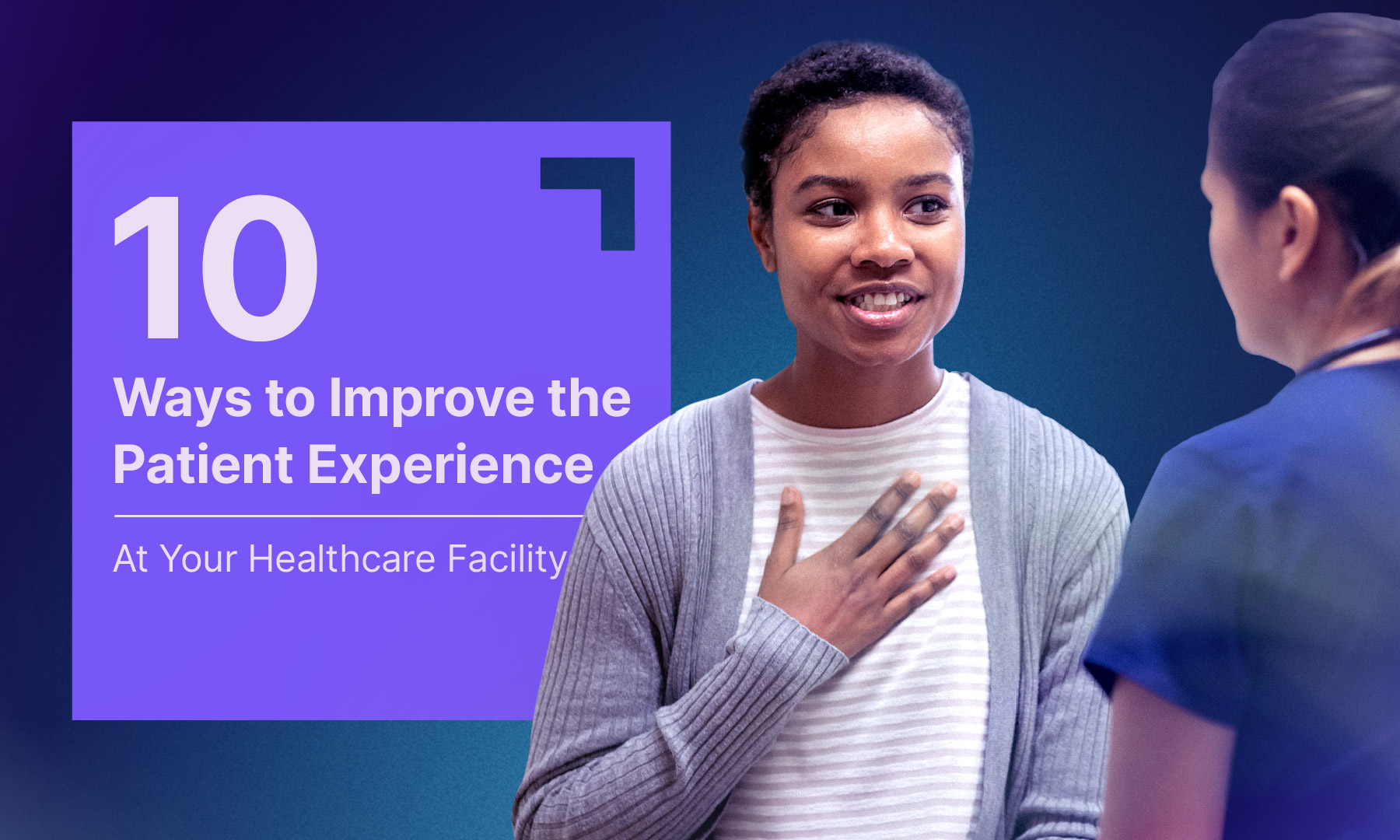
Whether they are a patient in a healthcare facility or a customer in a department store, people now expect to receive the same standard of quality in customer service. That’s according to a recent survey on customer experience management by Gartner.
As such, healthcare managers are encouraged to optimize their patient management and onboarding capabilities to provide a distinctive, seamless, and optimal patient experience every time. "Improve patient experience and retention by implementing and continually evaluating services that keep patients connected, such as: appointment scheduling, access to services based on the patient’s preferred methods of communication, and post-care follow-up protocols."
The patient experience includes every step from appointment booking and follow-up interactions to time spent in a healthcare facility. It’s not just about providing technological solutions that make it easier for patients to engage with their provider. The secret is maintaining a friendly connection with patients, offering them the most personalized service possible.
1. Think About Patients Before They Are in Your Facility
The relationship with your patients begins long before they set foot in your facility. What information can they find about you on the web? Is your website designed to be accessible to as many people as possible? Is the information to contact you or book an appointment easily available?
Clarity of appointment scheduling options is especially important. Remember not everyone who needs to use your services has the same preferences. For some, online appointment scheduling offers greater convenience, being available at any time of day, regardless of location. For others, a telephone service is the preferred method of communication. These people prefer to talk to someone, are not comfortable using the Internet or simply do not have access to it.
When deploying an online form, consider reducing the time required to respond by asking only for information that will be used later. In addition, there are ways to customize a form to meet the specific needs of your patients, depending on their situation or upcoming exam.
2. Get to Know Your Patients Better
To provide personalized service to your patients, it is important to get to know them better, to understand how they access your services and how they experience them. This starts with keeping track of some of their information (e.g., address, phone number, other patient information such as age, gender, dependents, history of visits); so that you don’t have to ask them every time. Also, consider their communication preferences. Remember to obtain their consent before recording any information about them.

3. Keep in Touch
Once a patient connects with your facility or one of your healthcare professionals, communication becomes key to your relationship. Send appointment reminders, pre-visit instructions or other directions for easy access to the meeting place. They will feel that you are truly preparing them for their visit to your establishment.
This type of practice undeniably creates engagement with patients; statistics show a significant reduction in absences due to forgetfulness and increased satisfaction with the services received.
To read more about the patient experience, visit Patient Experience - The Complete Guide.
4. Be Welcoming
When visiting a health care facility, it can sometimes be difficult to find your way around. It is suggested that you accompany patients, if possible, by providing clear directions, so that they can easily get to the requested location at the scheduled time. Try to make them feel reassured and confident when they arrive at your facility. Are the directions to the main entrance clear from the outside of the building? Once inside, is your reception area inviting?
More and more institutions are creating more relaxing living spaces (e.g., adding an indoor park or reposing furniture). This allows people to wait in a more pleasant environment, reduces stress and creates a less crowded waiting room. This is also a safer practice to avoid clustering, which has become more of a priority since the beginning of the pandemic. Overall, it creates a better experience for patients, prevents them from feeling like they are waiting a long time, and allows for a smoother flow of medical services.
5. Simplify Travel
Getting around a health care facility can be hazardous at times, depending on the size of the facility. Consider optimizing signage to make it easier to get around. Are there staff who can direct patients who feel a little lost? Also, hospitals are now developing wayfinding mobile apps that serve as guides to direct patients as they arrive on the hospital grounds, directing them to the right parking lot if they are driving and once inside, guiding them to the right departments.
6. Build Relationships Between Professionals
Patients expect you to have a complete understanding of their situation, regardless of the departments they have visited. Your facility is a single entity in their eyes. Communication between clinicians and other staff becomes essential to get the whole picture of a patient’s journey within your facility (and beyond if possible). If there are links between departments, communication should be smooth, responsiveness more efficient, and patients should not need to repeat their story from one department to another.
See how the Quebec Ministry of Health and Social Services plans to improve access to primary care and the patient experience for citizens by downloading our Use Case.
7. Always Keep Patients Informed
Again, communication is key to maintaining a good relationship with your patients. Once they are there, keep them informed. Is the schedule going as planned or will there be an additional wait time? In all circumstances, transparency is key. Patients will know what to expect, which tends to reduce patient dissatisfaction and impatience.
Patients not only expect to be able to see the results of a test quickly, but they also want to better understand their situation and know what the next steps are for their treatment.

8. Demonstrate Empathy
A visit to a health care facility is first and foremost a human experience. Isn’t health the most precious thing we have? Patients want to be reassured, cared for, and guided through the process. Your empathy could make a difference for them. Be kind to them. Greet them with a smile. Keep administrative procedures to a minimum by offering them help in filling out forms, for example. Accompany them, even after their visit to the hospital is over, to ensure their physical and mental health.
9. Collect Feedback After Each Visit
Patients need to feel that you really care about them, even after they have left your facility. So, keep in touch with them to get their feedback after each visit. How did it go? Are there any good things to highlight? Or suggestions for improvement? Make a commitment to make corrections where necessary and inform patients of these improvements. Your most satisfied clients will become your best ambassadors and they will not hesitate to recommend your establishment to their friends and family.
10. Think About Your Employees’ Experience as Well
Beyond the patient experience, it’s important to care about the experience of your employees. They are the ones who embody the values and personality of your facility on a daily basis. They are your face (and your smile). They can make the difference for every patient who walks through your door. Never forget that happy employees make for happy patients!
Petal’s Platform Helps You Provide a Better Patient Experience Throughout Their Care Journey
Petal’s solutions, including patient self-scheduling, clinical capacity management and care coordination, improve operational efficiency and access to care at your facility. These improvements will allow you to provide better coordination of hospital staff and patient care throughout the patient journey.
Gain greater visibility into your facility’s operations, make informed, data-driven decisions to improve performance, and streamline communications between different stakeholders. Petal’s Orchestration Platform allows you to deliver the right care, by the right healthcare professional, at the right time.
To learn more, contact one of our specialized advisors to request a demonstration.
Discover in this guide what the patient experience is, why it is important in healthcare facilities, what it takes to provide more patient-centered care and learn about emerging trends that will improve patient satisfaction.
